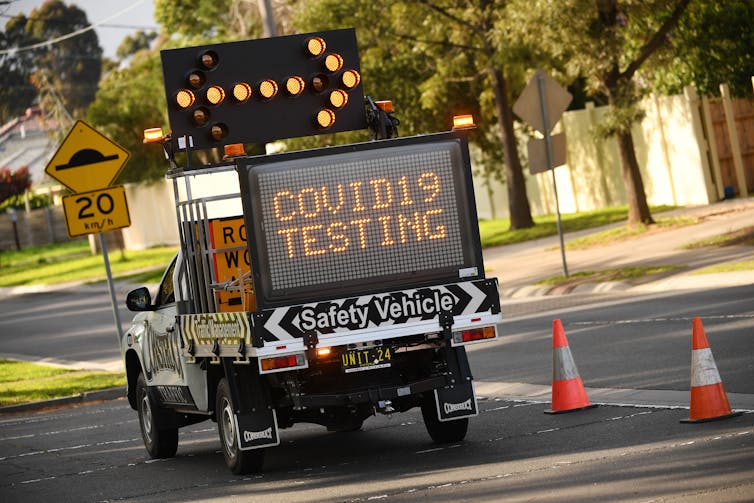Worried you might test positive and put a spanner in Victoria's COVID roadmap? Here's why you should get tested anyway
- Written by Breanna Wright, Research fellow, BehaviourWorks Australia, Monash Sustainable Development Institute, Monash University
Victoria’s much-anticipated roadmap out of lockdown was released on Sunday, bringing with it a clear outline of how (and provisionally when) Victoria will see an easing of restrictions.
The plan is transparent about the case numbers, or lack of them, required for the state to move to each progressive stage. For example, moving to the second step, provisionally scheduled for September 28, will require an average of 30-50 new cases per day over a 14-day period.
Victorians are suffering from lockdown fatigue. They’re exhausted and drained. The reopening of playgrounds, the singles bubble, shortening the curfew, and an extra hour of daily exercise are all gestures to keep them going during this difficult time. But many people are still desperate for the lockdown to end.
Lockdown won’t be over until the number of positive cases falls. And there’s a risk that a desire to end restrictions might discourage Victorians from getting tested, for fear of adding to the numbers and prolonging the lockdown.
Not getting tested?
The way society views an illness affects how people who have it or might have it feel and behave. Since the beginning of the pandemic, terms such as “COVID suspect” or “superspreader” have risked creating a sense of shame for those who contract the virus.
Those feeling unwell may not want to be seen as “part of the problem”. We know from other diseases, when there is stigma attached to being sick, people with symptoms are less likely to seek care. No Victorian will want to be blamed for restrictions lasting any longer than they have to.
Testing is still vital
Nevertheless, it is crucial people continue to get tested. Without this information, it will be impossible for the government to negotiate a safe path out of restrictions. Gaps in our knowledge could mean the decision-makers don’t have enough confidence to progress to the next step.
 If you have symptoms, testing is still the right way to go.
James Ross/AAP Image
If you have symptoms, testing is still the right way to go.
James Ross/AAP Image
Analysts already know when there are gaps in our understanding. Earlier this week, evidence of the coronavirus was found in sewage from Apollo Bay, about 200 kilometres southwest of Melbourne, despite no one in the area having tested positive.
Test results are just one piece of data — albeit a crucial one — that informs our understanding of the situation. Testing actually helps us move forward faster, not slower.
How to encourage testing
There are several ways to ensure the number of COVID-19 tests remains high. More than 2,403,388 tests have now been done in Victoria, 12,938 on Sunday.
1. Create a sense of pride in getting tested
Obviously, low numbers of positive tests are good. But high numbers of negative tests are much more informative than no test results at all. Telling your friends you’ve been tested, or posting it on social media, should be a source of pride that you’re doing your bit for Team Victoria.
2. Remove the stigma and shame
We should also work to remove the stigma of contracting COVID-19 — no one is catching it on purpose, after all. Campaigns such as Melbourne Strong aim to help people who are struggling in lockdown, and we should extend this kind of support to those going through COVID-19 itself.
3. Promote positive messaging
It’s important to remember how far we’ve come since the peak of Victoria’s second wave. On July 30 there were 723 new cases; on Monday we had 41. We also now know the targets we need to hit to end the restrictions, and Premier Daniel Andrews has raised the possibility they could even be lifted early. Influential community messengers can help reinforce this message of hope.
4. Make testing easier
The Victorian government has tried to make testing as easy as possible, through measures such as mobile testing, incentive payments and research into faster tests. They should also consider keeping information on wait times for different testing sites up to date, as for many places it is not currently available.
Read more: Goodbye, brain scrapers. COVID-19 tests now use gentler nose swabs
There’s no easy road out of this pandemic, but now we have the roadmap and we know where we need to get to. So if you have COVID-19 symptoms, don’t hesitate to get tested. You’ll be doing yourself and the whole state a favour.
Authors: Breanna Wright, Research fellow, BehaviourWorks Australia, Monash Sustainable Development Institute, Monash University



